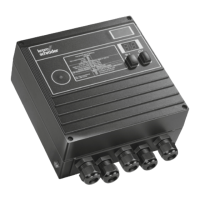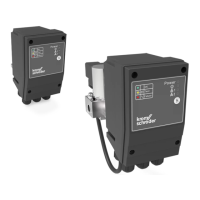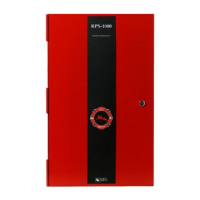BCU 440 · Edition 01.17 11
Function
01
02
04
Switch on BCU 440
Start-up with ϑ-signal
Safety interlocks (Limits)
In the event of fault signal:
reset
Flame simulation check
In the event of flame failure:
restart or
fault lock-out
Operation signalling
contact closes
Safety time t
SA
running (P22), ignition in
process,
V1 opens
3.2 Program sequence
Normal start-up
If an “old” fault is still being signalled after switching on,
it will be necessary to reset this first.
When the safety interlocks are closed, the burner can
be started with the start-up signal (ϑ).
The flame simulation check is conducted during the
waiting time, once mains voltage has been applied.
After the waiting time, the BCU opens valve V1 and ig-
nites the burner. The ignition time t
Z
is constant.
If a flame is detected during the safety time t
SA
, the op-
eration signalling contact between terminals 16 and 17
closes. This completes start-up.
The burner can also be started manually with the aid of
the switch on the BCU. Voltage must be applied con-
tinuously to terminal 1 in order for this to occur.
Start-up without flame signal
If no flame is detected during the safety time t
SA
, a fault
lock-out occurs.
Behaviour in the event of flame failure during
operation
If the flame fails during operation, either an immediate
fault lock-out or a restart occurs. This procedure can
be set via the optical interface (parameter 12, “Burner
restart”).

